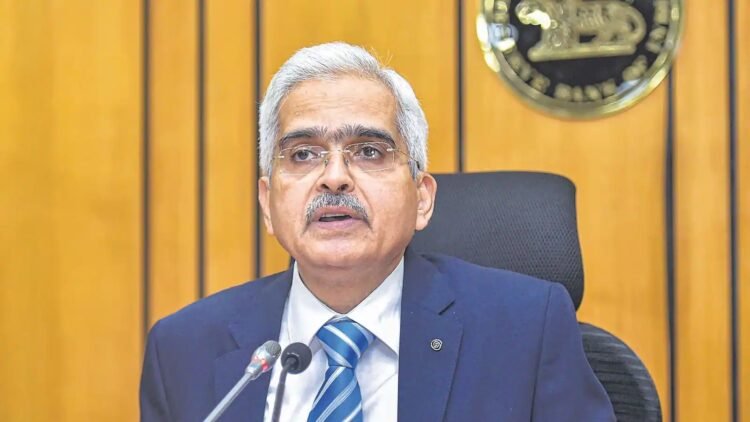RBI Governor Shaktikanta Das delivered a keynote address on October 14, 2024, at the RBI@90 High-Level Conference in New Delhi.
The High-Level Conference on ‘Central Banking at Crossroads’ marks a significant moment to reflect on the evolving role of central banks. The early years of this decade are likely to be viewed as a turning point in the history of central banking. The aftermath of the COVID-19 pandemic and ongoing geopolitical challenges have placed central banks in uncharted territory. Today, they face unprecedented scrutiny of their roles and responsibilities, making this a crucial period for reassessing their functions and future direction.
I feel highly privileged to be here at this High Level Conference on ‘Central Banking at Crossroads’ and share some of my thoughts. When the definitive history of our times is written, the turn of the current decade will, in all probability, be regarded as a watershed in the evolution of central banking. In the aftermath of the COVID-19 pandemic and the persistent geopolitical strife thereafter, central banks are treading in the uncharted terrain of a twilight zone. Today, like never before in the five centuries of their existence, central banks are confronted with a future where their mandates, their functions and their performances are all up for unforgiving scrutiny.
Around them, the environment in which central banks have been operating is undergoing tectonic transformations. Structural changes are underway that have the power to fundamentally alter the context of central banking with headwinds from geo-economic fragmentation; muscular industrial, trade and financial policies that are already reshaping supply chains and the availability of critical minerals, intermediates, resources and services; new technologies; and climate change. In this rapidly evolving environment, central banks are required to navigate not just known unknowns but unknown unknowns too.
Yet, even at these exceptional intersections, central banks are exploring new pathways and striving to reinvent their remit and functioning as the guardians of financial stability. Their effort is to stay ahead of these developments by strengthening guardrails and leveraging on technological innovations.
For the Reserve Bank of India (RBI), as we commemorate its 90th year, it has been an eventful journey since its establishment in 1935. In many significant ways, the Reserve Bank embodies the developmental aspirations of India. The landmarks of its journey are equally milestones in the progress of India. At the current juncture and looking ahead, developments around the world are impacting India on a continuous basis and challenging us as practitioners of central banking.
Today’s conference gives us an opportunity to introspect on the journey of central banking so far and how we want to visualise and shape our role in the future. In my remarks today, I propose to briefly focus on three areas where central banking is likely to be redefined in the future: monetary policy; financial stability; and new technologies. In fact, these are among the themes of specific sessions in today’s conference. My observations would be mainly in the context of central banking across countries.
Monetary Policy
The three decades of restrained volatility of business cycles and the co-existence of price stability and uninterrupted growth that preceded the global financial crisis (GFC), perhaps lulled central banks into the belief that inflation expectations are enduringly anchored. The beast of inflation of the 1970s and early 1980s seemed completely behind our times. Conditioned by that experience, central banks shed their role of ‘lender of the last resort’ and became lender of the first resort to defend their financial systems when they responded to the GFC.
They continued from their GFC moment and once again rushed to the frontline as warriors of the first resort to protect and preserve lives and livelihood when the COVID-19 pandemic hit the world. They took interest rates to all-time lows, undertook unconventional policy measures to reach out to interest rates across the spectrum, including at the longer end, and gave assurances about low for longer interest rates. This was an uncharacteristic departure from the monetary mysticism that had prevailed up to the 1990s. Clearly, central banking has evolved in line with the developments of the 21st century.
While the pandemic time measures provided the much-needed support to the economies, in the aftermath of the pandemic the limits and downsides of easy monetary policy in protecting economic activity in a crisis period became evident. Today, rightly or wrongly, the central banks are accused of distributional consequences of their actions. The negative equity that weighs in the balance sheets of certain central banks is seen as compromising their independence in the conduct of monetary policy. The story in India was, however, different as most of our liquidity measures were calibrated and carried end dates at the time of their announcement itself.
Another challenge staring at central banks today emanates from soaring public debt caused, in a considerable measure, by the pandemic-related fiscal stimuli and the subsequent efforts for fiscal consolidation not gaining adequate traction. Such a situation is becoming a binding constraint on monetary policy in several countries. Global public debt has surged post the pandemic to 93.2 percent of GDP in 2023 and is likely to increase to 100 percent of GDP by 20291.
In major economies, debt-GDP ratios are on an upward trajectory, raising concerns about their sustainability and their negative spillovers for the broader global economy. In several other countries, central banks are willy-nilly expected to facilitate financing of such huge public debts. In fact, the debt overhang is simmering underneath the radar of central banks, threatening to un-anchor inflation expectations and undermine macroeconomic stability.
For emerging market economy (EME) central banks, the international dimensions of monetary policy continues to be a testing challenge. For them, the trilemma is real. Today the global economy is more financially integrated than ever before. Monetary policy actions in systemic economies produce large fluctuations in capital flows and exchange rates, which can then feed into domestic liquidity, inflation and eventually affect the real economy.
While monetary policies in the systemic economies are determined by their domestic inflation-growth considerations, they have large spillovers to the emerging and developing economies and even to other advanced economies. These spillovers can be expected to accentuate as capital flows dwarf trade flows. Quite naturally, emerging economies are having to strengthen their policy frameworks and buffers to manage this external flux and mitigate its adverse consequences.
Financial Stability
Financial stability is the essential reason why central banks exist. Price stability as a central bank objective is of more recent vintage. There is a growing opinion today that ‘low for long’ policies practiced during the GFC and again during the pandemic, apart from providing support to the real economy, also produced exuberant financial asset prices that have come back to haunt central banks in their role as guardians of financial stability.
Amidst ultra-low interest rates and super abundant liquidity, leveraging and risk-taking were celebrated as if there is no tomorrow. Consequently, when central banks were confronted with inflation surges in 2022 in the shadow of the war in Ukraine, they reacted with one of the most aggressive and synchronised tightening of monetary policies in history.
This resulted in risks to financial stability, especially when these risks morphed into banking crises in certain countries in March 2023 and sell-offs in financial markets in August and September 2024. These developments have once again brought to fore the role of central banks in securing and preserving financial stability. Specifically, how should they account for financial stability considerations in their pursuit of price stability?
Let me now address some of the emerging risks to financial stability. First, the divergence in global monetary policies – monetary easing in some economies, tightening in a few, and pause in several other economies – can be expected to lead to volatility in capital flows and exchange rates, which may disrupt financial stability. We saw a glimpse of this with the sharp appreciation of the Japanese Yen in early August which led to disruptive reversals in the Yen carry trade and rattled financial markets across the globe.
Second, private credit markets have expanded rapidly with limited regulation. They pose significant risks to financial stability, particularly since they have not been stress-tested in a downturn.
Third, higher interest rates, aimed at curtailing inflationary pressures, have led to increase in debt servicing costs, financial market volatility, and risks to asset quality. Stretched asset valuations in some jurisdictions could trigger contagion across financial markets, creating further instability. The correction in commercial real estate (CRE) prices in some jurisdictions can put small and medium-sized banks under stress, given their large exposures to this sector. The interconnectedness between CRE, non-bank financial institutions (NBFIs), and the broader banking system amplifies these risks.
New Technologies
In recent years, the technology-driven digitalisation wave in the payments sphere has been revolutionary. While most of the innovations have been at the national level focusing on retail payments, the market for cross-border payments has also expanded substantially. The significant volume of cross-border worker remittances, the growing size of gross flows of capital, and the increasing importance of cross-border e-commerce have acted as catalysts to this growth.2,3 Remittances are the starting point for many emerging and developing economies, including India, to explore cross-border peer-to-peer (P2P) payments. We believe there is immense scope to significantly reduce the cost and time for such remittances.
India is one of the few large economies with a 24×7 real time gross settlement (RTGS) system. The feasibility of expanding RTGS to settle transactions in major trade currencies such as USD, EUR and GBP can be explored through bilateral or multilateral arrangements. India and a few other economies have already commenced efforts to expand linkage of cross-border fast payment systems both in the bilateral and multilateral modes.4
Read More: Global RTGS Expansion: India to Include Dollar, Euro, and Pound Transactions I India CSR
India has developed a world-class digital public infrastructure (DPI), which has facilitated the development of high-quality digital financial products with enormous potential for cross-border payments. India is now home to the world’s third most vibrant startup ecosystem, with over 140,000 recognised startups, more than a hundred unicorns, and over US$150 billion in funding raised. India’s experience in DPI can be leveraged by other countries to improve and usher in a global digital revolution.
Central bank digital currencies (CBDCs) is another area which has the potential to facilitate efficient cross-border payments. India is one of the few countries that have launched both wholesale and retail CBDCs. Programmability, interoperability with the UPI retail fast payment system and development of offline solutions for remote areas and underserved segments of the population, are some of the value added services which we are now experimenting as part of our CBDC pilot.
Going forward, harmonisation of standards and interoperability would be important for CBDCs for cross-border payments and to overcome the serious financial stability concerns associated with cryptocurrencies. A key challenge could be the fact that countries may prefer to design their own systems as per their domestic considerations. I feel we can overcome this challenge by developing a plug-and-play system that allows replicability of India’s experience while also maintaining the sovereignty of respective countries.
It is well recognised that growing digitalisation of financial services has enhanced the efficiency of the financial sector across the globe. At the same time, it has brought in several challenges which central banks have to deal with. For instance, in the modern world with deep social media presence and vast access to online banking with money transfer happening in seconds, rumours and misinformation can spread very quickly and can cause liquidity stress. Banks have to remain alert in the social media space and also strengthen their liquidity buffers.
20. Latest technological advancements such as artificial intelligence (AI) and machine learning (ML) have opened new avenues of business and profit expansion for financial institutions. At the same time, these technologies also pose financial stability risks. The heavy reliance on AI can lead to concentration risks, especially when a small number of tech providers dominate the market. This could amplify systemic risks, as failures or disruptions in these systems may cascade across the entire financial sector.
Moreover, the growing use of AI introduces new vulnerabilities, such as increased susceptibility to cyberattacks and data breaches. Additionally, AI’s opacity makes it difficult to audit or interpret the algorithms which drive decisions. This could potentially lead to unpredictable consequences in the markets. Banks and other financial institutions must put in place adequate risk mitigation measures against all these risks. In the ultimate analysis, banks have to ride on the advantages of AI and Bigtech and not allow the latter to ride on them.
Conclusion
Despite the difficult trials and trade-offs, central banking in the current decade is a success story. In the realm of monetary policy, central banks have been successful in bringing inflation closer to targets. Major financial collapses or recessions, seen during earlier episodes of crisis, have been averted. Central banks are now at the forefront of technological innovations and are driving them through sandboxes, innovation hubs and hackathons.
22. As we navigate the high intensity tail events and black swans of the current decade, the lessons imbibed can well form the basis of our deliberations today to chart out a course for the future. Central banks must remain vigilant, adaptable, continuously assess risks and build resilience. They should remain prepared to navigate complex challenges, support sustainable growth, maintain price stability and promote sound and vibrant financial systems.
Thank you.
1 IMF Fiscal Monitor, April 2024.
2 The value of global cross-border payments is estimated to surpass US$ 250 trillion by 2027 (Cross-border payments | Bank of England)
3 The global cross-border B2C e-commerce market which was valued at US$ 889 billion in 2022 is estimated to grow by more than six times to US$ 5.6 trillion in revenue by 2030 (Cross-border B2C E-commerce Market Size Report, 2030)
4 These include Project Nexus, a multilateral international initiative to enable instant cross-border retail payments by interlinking domestic Instant Payment Systems (IPSs) of four ASEAN countries (Malaysia, Philippines, Singapore, and Thailand) and India. Under bilateral arrangements, cross-border payment linkages have already been established by India with Singapore, UAE, Mauritius, Sri Lanka, Nepal, etc.
(Copyright@IndiaCSR)























